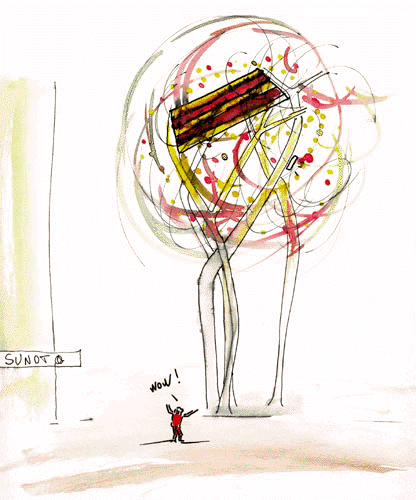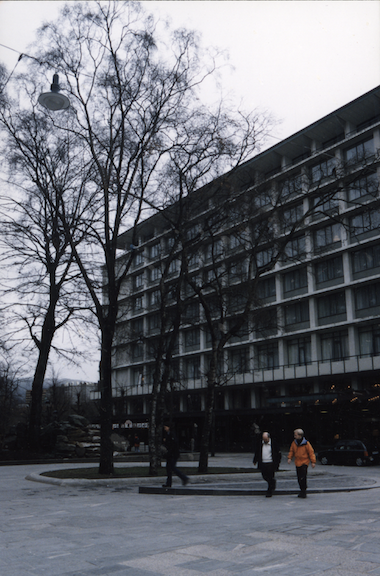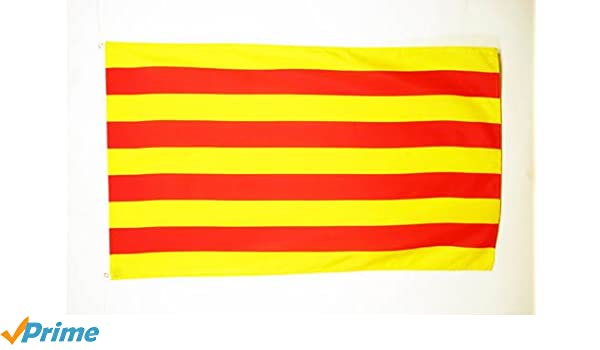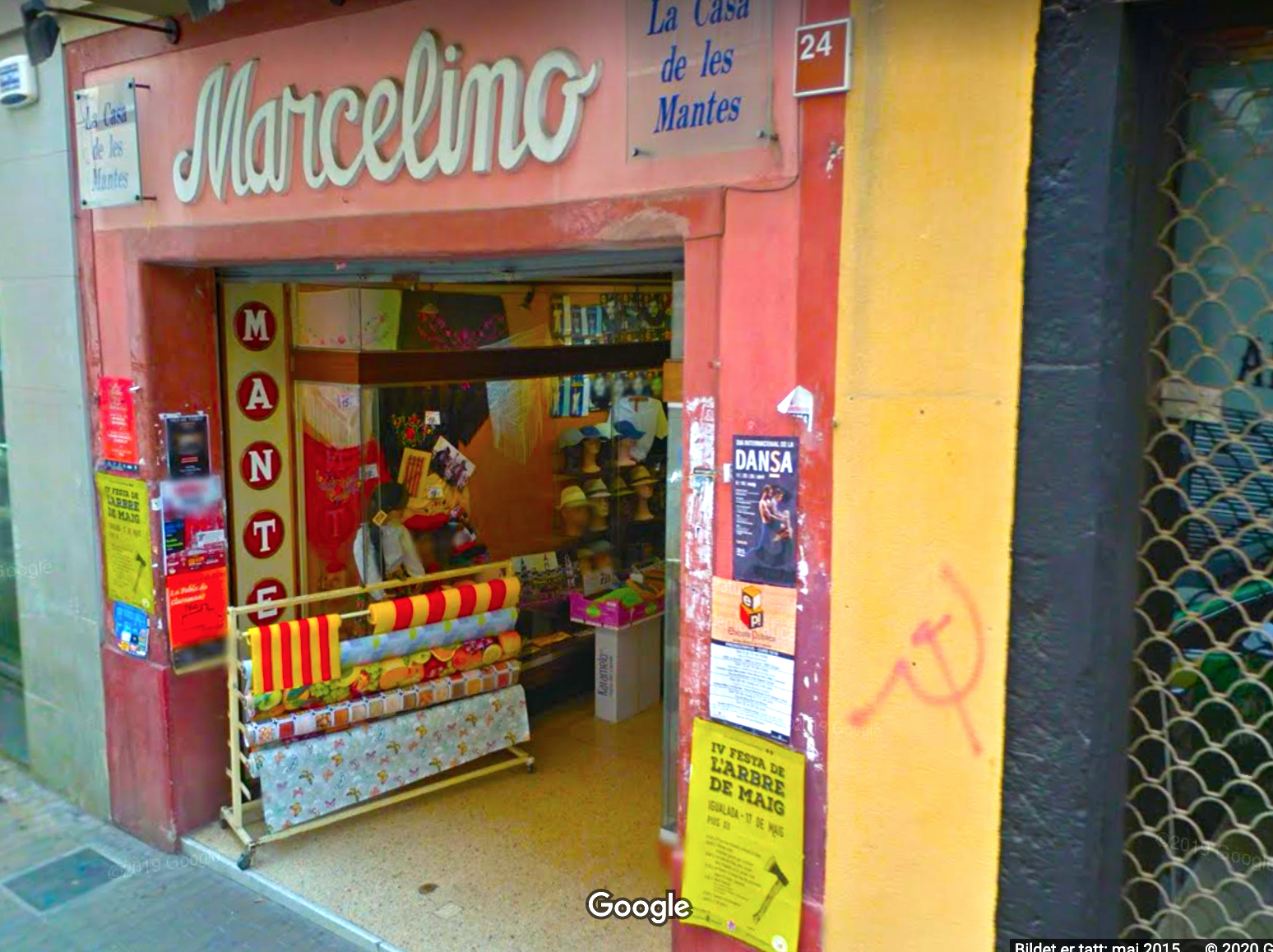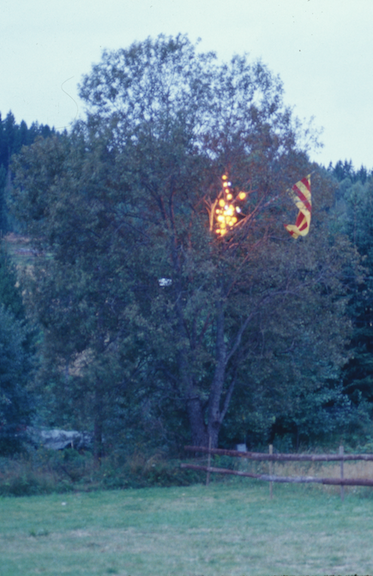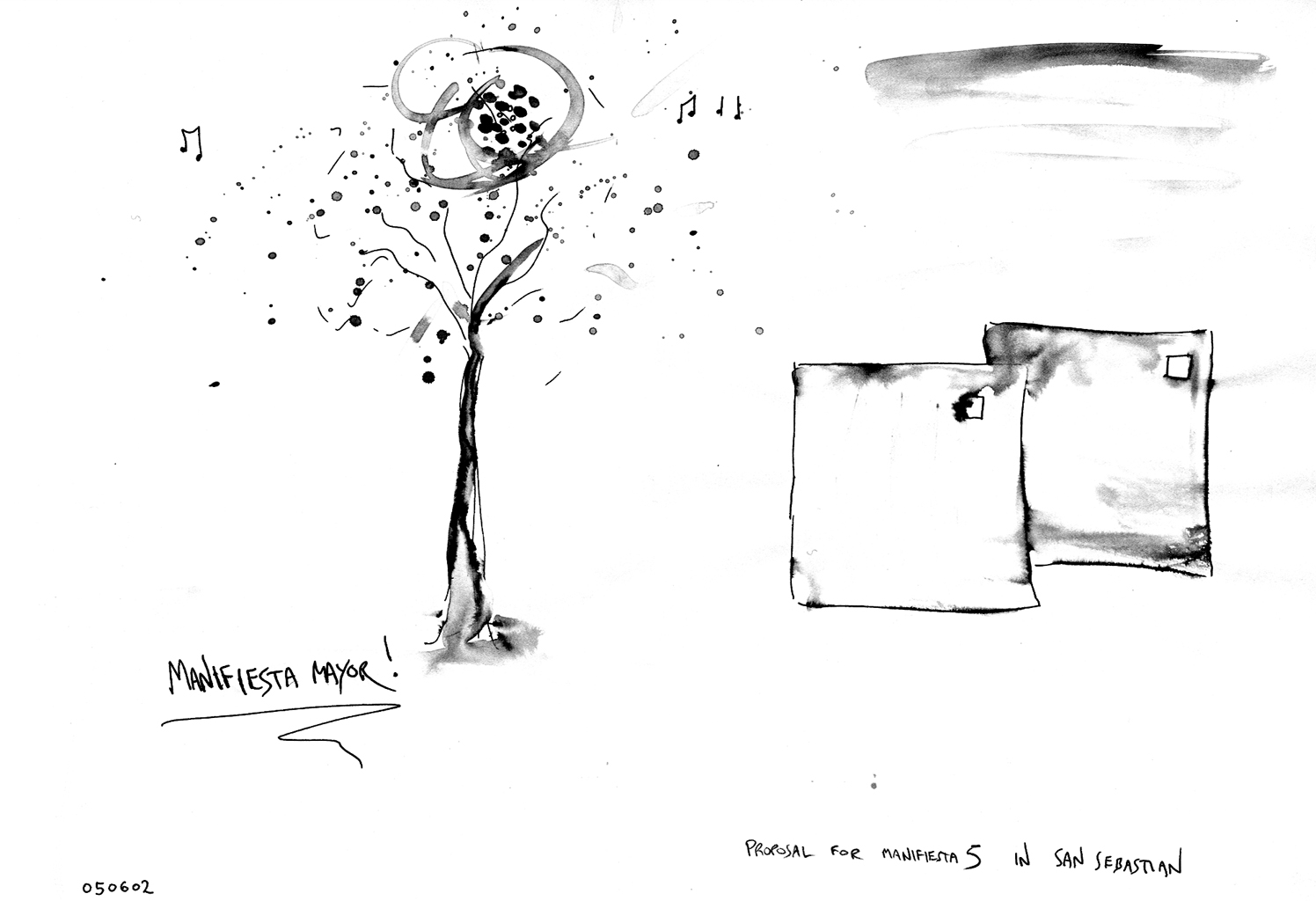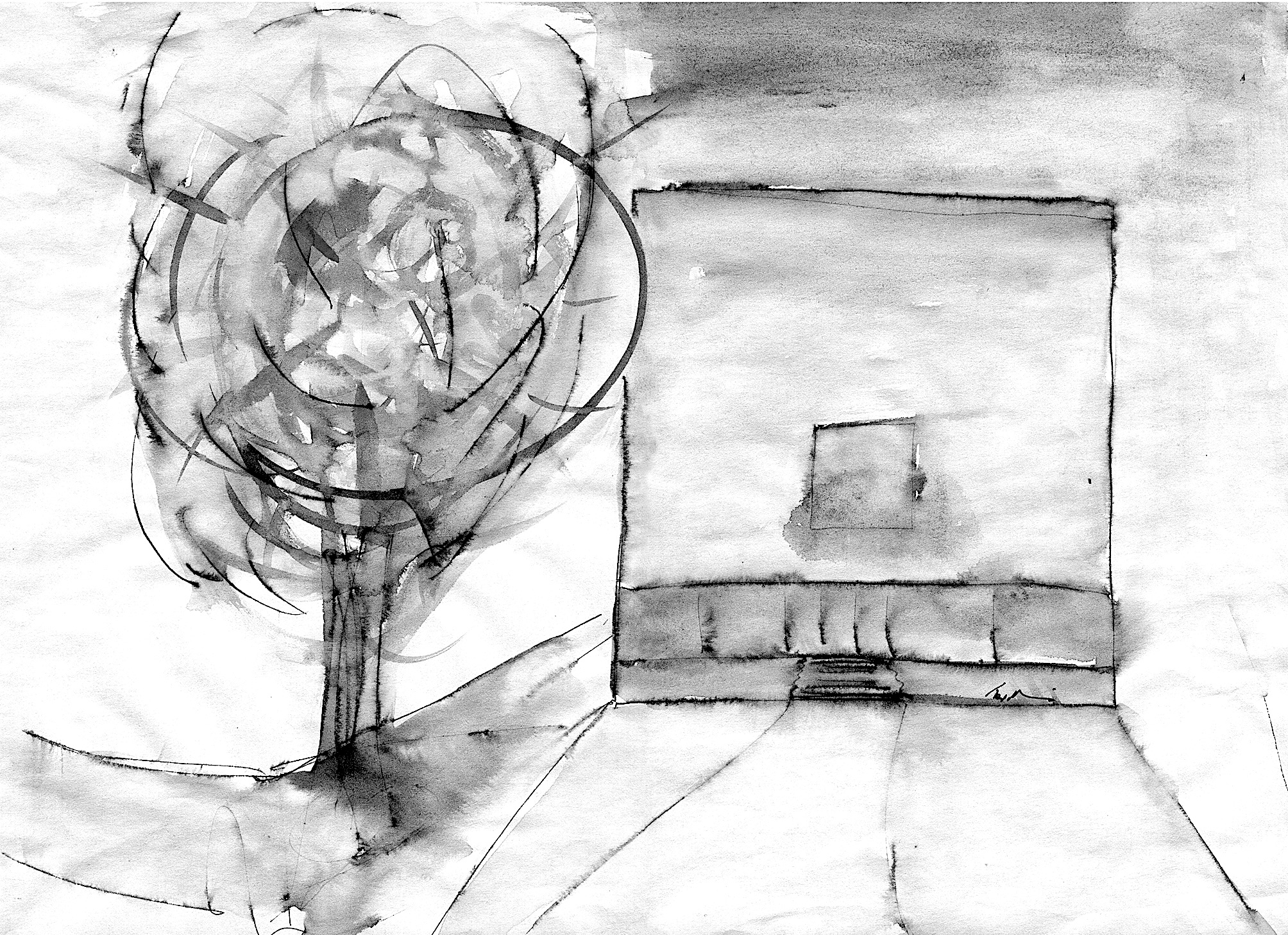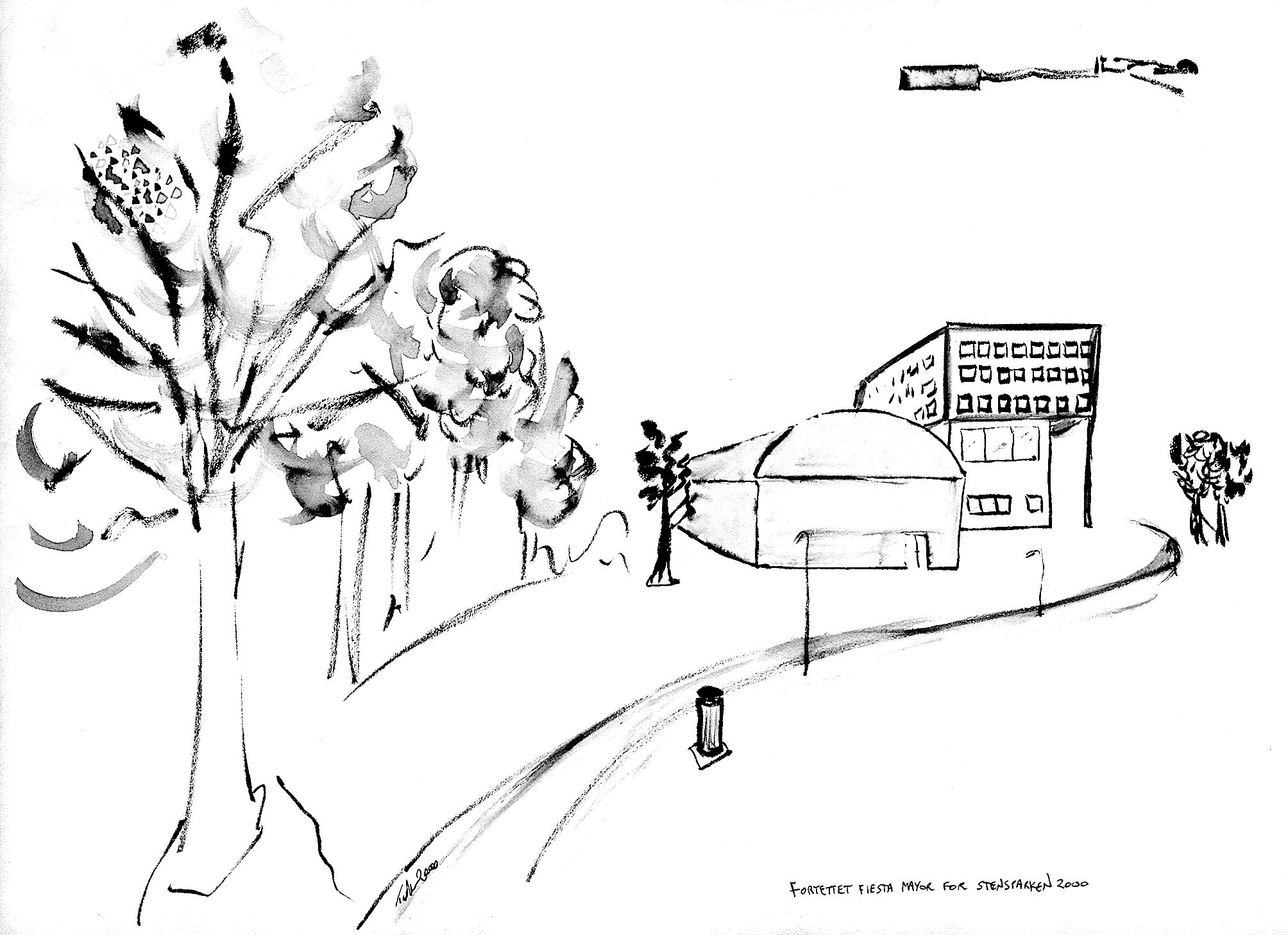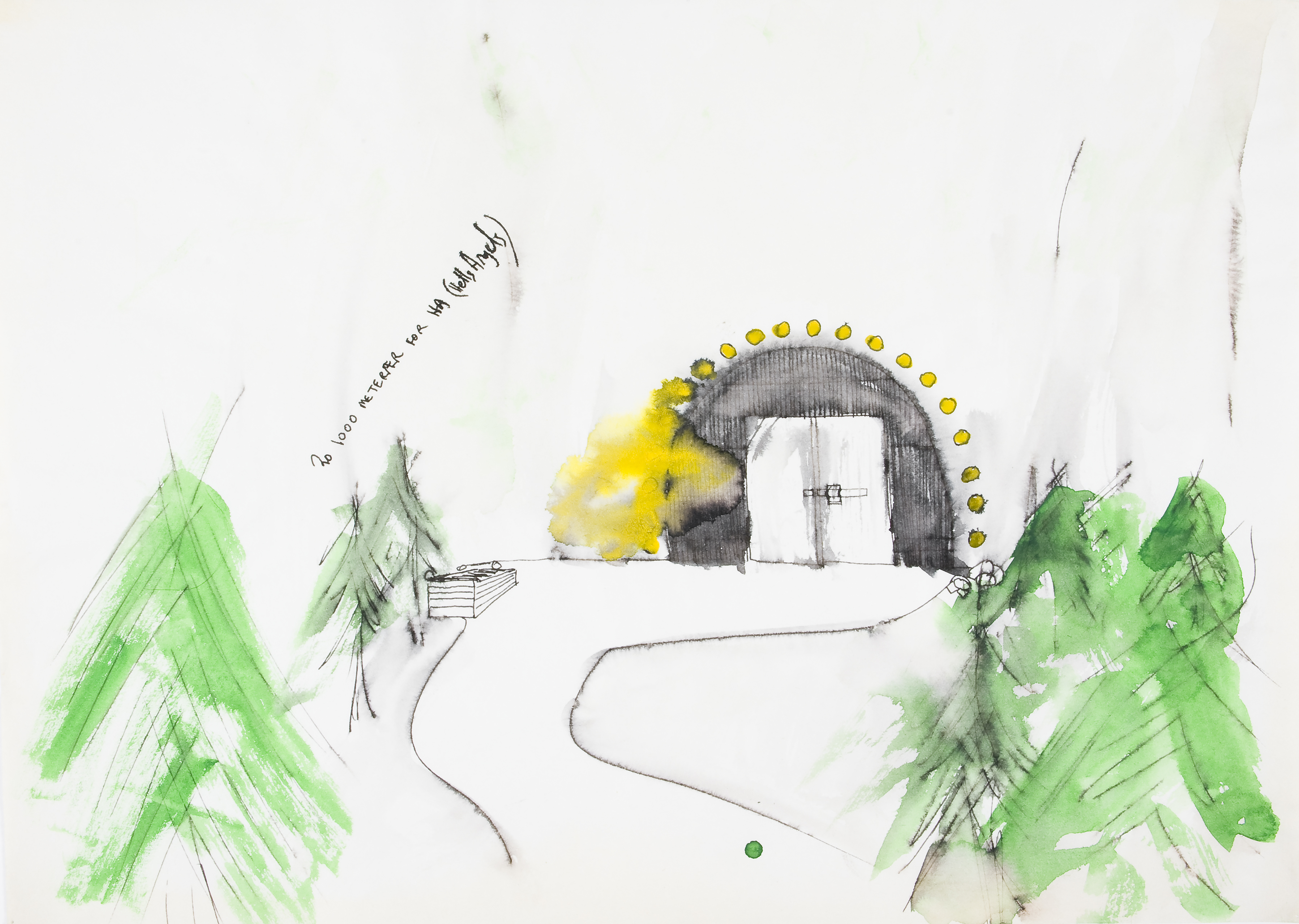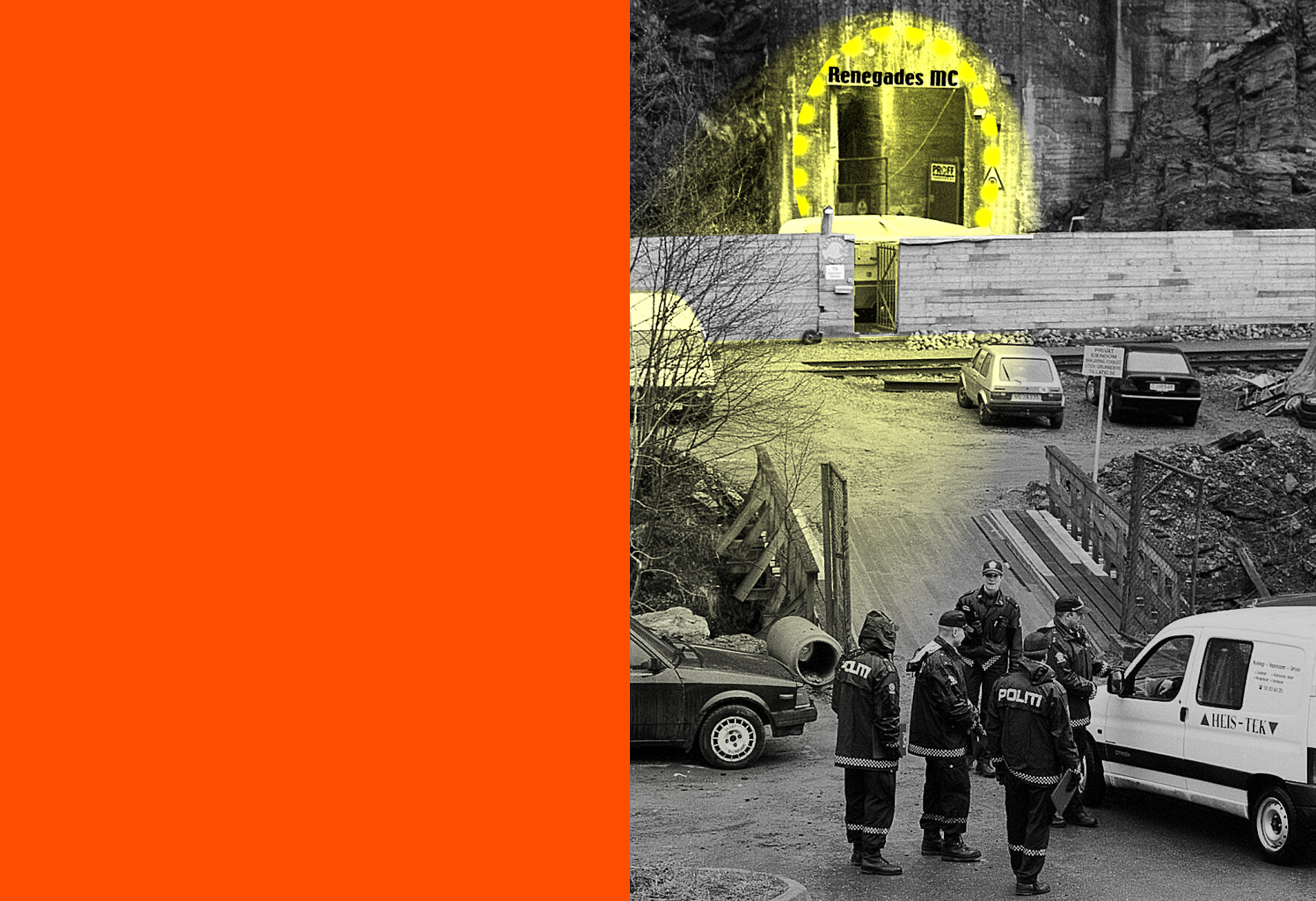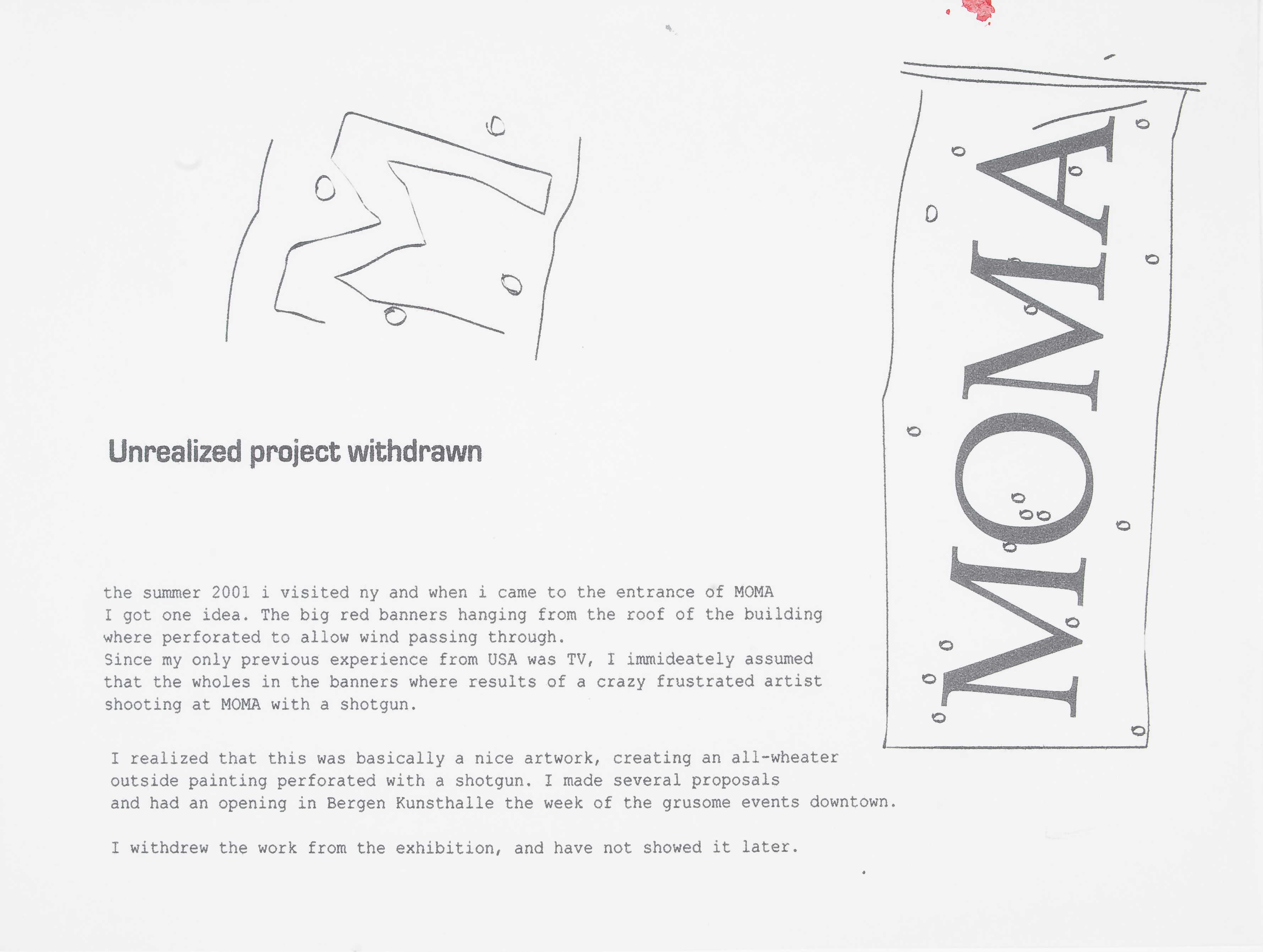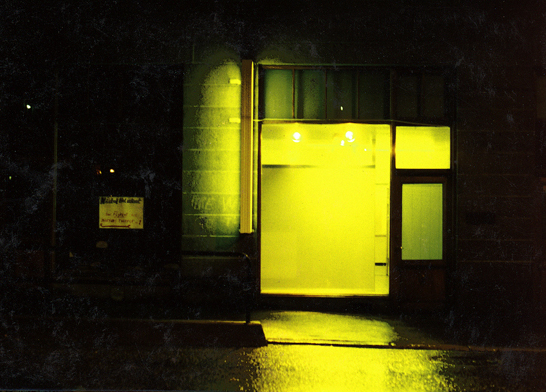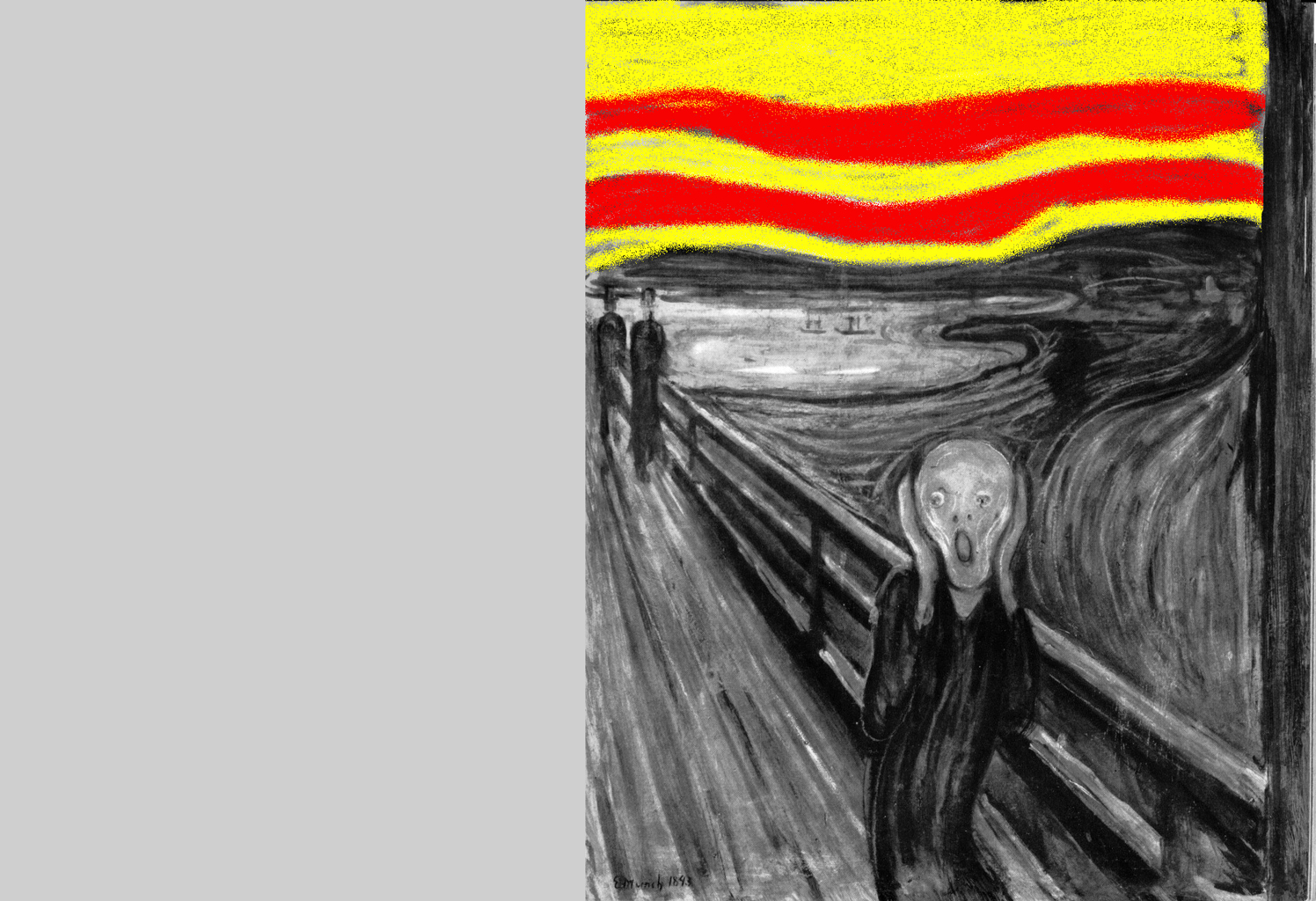Beneath an umbrella on Ole Bulls plass in Bergen in spring 1998, I gained a greater understanding of the potential melancholy in Terje’s oeuvre. As part of the Bergen Festival, he presented the installation Fiesta Mayor, reminiscences from a Spanish village festival: pennants, lights and music unreachably high up on the trees in the square. The work proved to be a much-loved blend of his artistic populism and his romantic proletarian attitude to life and his own ancestry. Geir Tore Holm (2000)
Fiesta Mayor paa Ole Bulls plass 1998
1998-04
Bergjot Jonsdottir, the director of Bergen International Festival, asked me to propose a public space project at the festival. This festival is quite interesting, but it is a bit expensive and therefore exclusive. My idea was to make a more folkloric (Latin) party at the same time making it exclusive, more exclusive than the rest of the festival. The site I chose for the installation, were in front of the best and most central hotel, at a square that is named after one of Norway's first pop stars, the violinist and composer Ole Bull.
How:
Rent a lift of that can reach approximately 18 meters high; Install carefully around 100 coloured light bulbs and one outdoor loudspeaker at a considerable height. Find the nearest streetlight wire and lead one extension cable plus one thick loudspeaker cable along it, towards a building you have access to. Inside the building, install a Minidisk with a prerecorded salsa sound and put it on repeat. Plug in the power for the light and the party is on. Good sounds for this artwork are salsa demos on advanced electric organs.
Realised
____________________________
" Beneath an umbrella on Ole Bulls plass in Bergen in spring 1998, I gained a greater understanding of the potential melancholy in Terje’s oeuvre. As part of the Bergen Festival, he presented the installation Fiesta Mayor, reminiscences from a Spanish village festival: pennants, lights and music unreachably high up on the trees in the square. The work proved to be a much-loved blend of his artistic populism and his romantic proletarian attitude to life and his own ancestry. As lyrical as Trubadurix, as sentimental as his declarations of love for rhododendrons and Bergen’s seven hills, and yet a clear commentary on the context in which the work was presented: an international festival with site-specific art.
The dark cloud of reality looms, showing up the difficulties that arise when artistic practice moves from semiotic analysis into social commitment. Artists who become anything more than Chinese acrobats for a purchase-hungry public come up against the realisation that the more physical work that goes into a product, the better it will be – effectively measuring it by the amount of sweat produced. There is also a question as to the reasoning behind the changed objectives: a will to power? Power lies in folded hands, as people used to say. Perhaps it is more a matter of regaining esteem and securing means of advancement that demand respect". Berlin, Christmas 2000
Geir Tore Holm, Factual Details / - Paintings, in Terje Nicolaisen (2001), Norsk Sokkel Forlag
______________________________
Bergen International Festival / Festspillene i Bergen asked me to do a temporary public art project during the festival. I loved this elitistic high end festival, but the tickets were really expensive. Not for people like me, anyway. So I thought; I'll make a festival inside the festival that are even more exclusive, something that is out of reach even for the prominent guests, that included Her Majesty Queen Sonja among others.
For me this became a journeyman piece, a sort of total art production examination, one year after I left the academy. In the master studio program I got one year free studio at Verftet in Bergen, and could further develop form there.
The permission: I had to smalltalk with a lot of people in the municipality, just to get them to let me use the group of trees outside Hotel Norge. But I got there.
The Lightbulbs: I got an installation company to make outside rainy weather proof chains of lightbulbs. There was no other way in this weathertown. So I ordered 50 meters of chain with lamps every half meter. I ordered the special socket coloured lightbulbs by the hundreds from Germany I think it was.
The Music: I decided to use a readymade piece of music, a very generic and digestable latin salsa clip. I found it in the Dekadanse organ, which has a demo showing all the possibillities of what this amazing self playing half automatic organ can do, but at a level you will never achive, unless you designed the organ youself. (Roland E-28 Intelligent Keyboard) Anyways, this powerful demo (around 20 seconds) og the salsa department, became the soundtrack of this outdoor installation, set on a minidisc to repeat every 3 minutes or so. Not loud (it was next to a hotel), but just loud enough to hear it when you were strawling by, crossing the Ole Bulls Plass on your way to work or on your way to a date. This was a 24 hour service.
The Fabric: For me, having lived 4 years on the countryside in Catalonia, the topic of flags or pennants was in place. It had to be a Catalan flag, a symbol og sovereignty, fight against fascism and fiestas! The fabric I bought in my favorite textile shop, Marcelino in Igualada, an amazing place, so old that the sign above the door, is carved in wood, and the art nouveau ornaments surrounding the name are carved at the time when art nouveau was actually the new art. A wonder amongst shops, there are tens of thousands of items for the home, for the body, pennants, hats, flags and nationalist effects.
The Montage: To mount this installation, at 12 to 18 meters hight, I rented a lift from a local entrepreneur. When I picked it up, I realised that the lift was placed on a large truck, which I did not have permission to drive. There was no alternative, a crime had to be performed, for the cause. I drove the truck to the site and had a fellow student (Yngve Rønning) help me put the gear up in the trees. Did I mention the 50 meter special thick copper loudspeaker cable for the music, that had to be strapped to en exixting powercable on to Hotel Norge where the minidisc were hidden?
All in all, the lights were not as powerful and effectful as I would have wanted them to be (The natural light at this time of year is never really dark) and the installation was hard to discover if the usic was not playing. Well, it made the "festival" even more exclusive, I guess. Oslo 26.april 2020
___________________________________
Artist Books on the subject:
Prospekt: Fiesta Mayor på Festningekaia 2001 (2000) Acrylic paint, ink and watercolour On paper, Stapled. 200 x 150 mm 8 sheets Unique-TN-0110
Fiesta Mayor paa Ole Bulls plass 1998 (1998) Waterolour and inkjet on copied paper, spiralbinding 296 x 214 mm 12 sheets Unique-TN-1010
Fiesta Mayor (1998) Ink and watercolour on paper, stapled. 262 x 304 mm 8 sheets Drammens Museum Unique-TN-0330
Proposals for Momentum (2000) Pen and watercolour on paper, stapled. 149 x 106 mm 8 sheets Unique-TN-0420
Proposals for Ringnes (2008) Ink, watercolour and pencil On paper, stapled. 261 x 191 mm 16 sheets Unique-TN-2000
Sigeunerpack TN (1998) Ink and watercolour on paper, stapled. 275 x 159 mm 4 sheets Drammens Museum Unique-TN-0290
____________________________________
Untitled (1000 meters)
1998
For several years, I was doing a conceptual work with light, installing yellow light in galleries, museums and in public space. The idea was quite simple and based on an antiwhitecube attitude; it seemed to me at this point in my studies, that whatever you put into a white cube, would function as art. This led to the assumption that the white cube itself is the genuine art constitution and that the space is the object and the art-object its hostage.
So, instead of bringing the sculptural object into the space and install it, I decided to leave a specific layer of paint on the original lighting system. I basically painted the light tubes with a Lukas Fine Oil colour and left the rest of the space untouched. The effect was astonishing, as the entire space was literally filled with yellow light. I closed the gallery during the exhibition and the public related to it from the outside.
Living in Bergen some years later, a local biker club got hold of a tunnel space left by the national railroad, a perfect site for a club like this, with a drive-in entrance and a huge industrial space hidden in the back alley of regular traffic. I saw an excellent possibility for extending my yellow light readymade project:
Around the entrance of the tunnel, a suitable amount of strong halogen bicycle headlights are mounted in a chain. The lighting can either be used as a work light in the yard or be programmed to be turned on every time someone is coming up the road towards the tunnel, as a welcome or as a get-the-hell-out-of-here sign.
